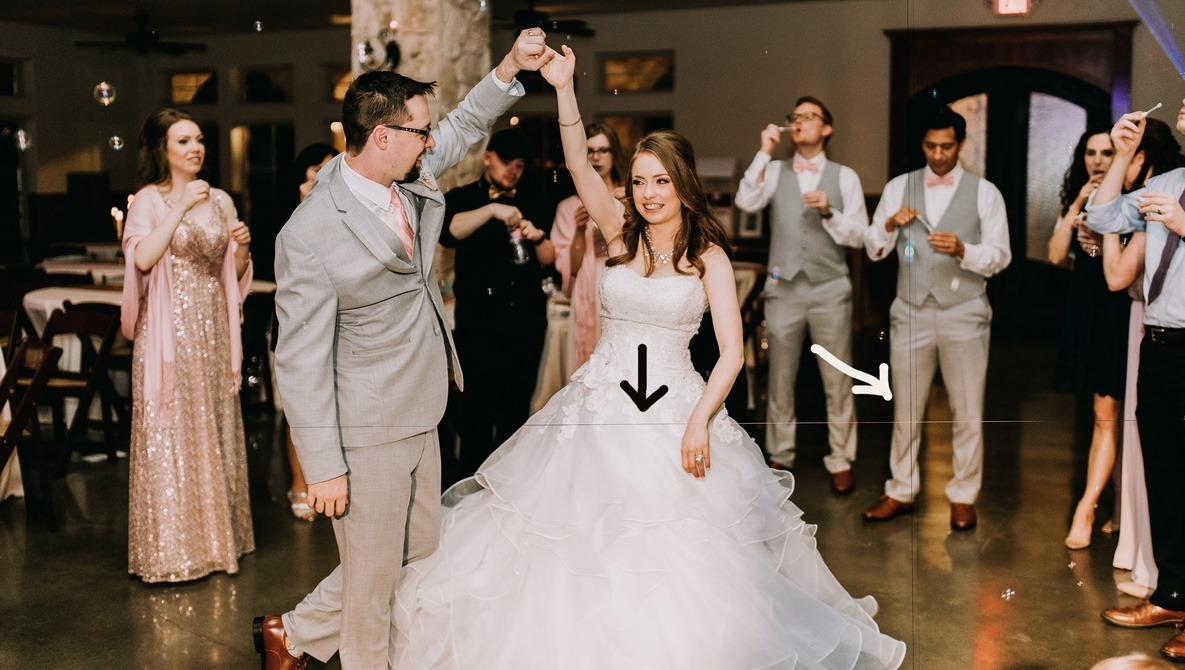A wedding photographer returned home to make a grim discovery: the images from the wedding she had just spent the day shooting had two lines running throughout them. Upon doing some research, she found the lasers from the dance floor lighting had caused the damage, meaning she had to spend hours removing the lines in Photoshop and buy a new sensor.
Brittany Bay, who runs Bay Productions in Dallas, Texas, had had a successful day shooting a wedding. But towards the end of the day, she reveals in a Facebook post, she noticed two prominent lines that she was previously unfamiliar with. Hoping it was simply an issue with her LCD screen, she was frustrated to return home and find the all of the images were displaying the same issue.

She has now released an image from the wedding in question, adding arrows to illustrate where the lines across the picture. In her post, she also linked to this article which better explains how and why it happens.
In future, Bay says she will “absolutely NOT” take pictures at wedding receptions that have lasers, although luckily, it’s something she says she rarely encounters. A replacement sensor is costing her around $1,000, not to mention the many hours she has had to spend removing the lines manually in Photoshop. Ouch!
If you want to learn more about wedding photography, be sure to check out our very own tutorial, "How To Become A Professional Commercial Wedding Photographer."
Images: Brittany Bay.







By using Darktable you could fix this problem in literally 2 minutes for all photos
Have to ignore the trolls on here. Thanks for a useful article and reminder!!!
Hours ??!!! Learn photoshop and script.
If the lines are in the same place for all the photos you can set up batch action in photoshop or preset to fix it in LR
Everybody always says you need dual-card-slots for weddings, but they should be more concerned with having dual sensors! 😂
One reason why I shoot events with four cameras.
Rather unusual. As an experienced wedding and event photogrpaher I've come across lasers on many occasions, some military grade...https://www.jamesrobertshawphotography.com/iy-project/ and never had the same effect. Being of a questioning mind, I wonder just how unlucky you have to be to have the beam hit the sensor when sooting stills and what that would do to your eye.
My thing is that it's totally possible, but I've never once heard of it happening. I've shot over 600 weddings, and have dozens of friends who have done the same. Hundreds of them had lasers, and not once have I heard of this ever happening.
But I have heard of sensors going bad, and lines like this happening just from sensor failure.
What's the more likely option to have happened?
I've seen other reports lately of various types of lasers at events, and even one car-borne laser, ruining sensors.
https://petapixel.com/2019/01/12/mans-1998-mirrorless-camera-fried-by-se...
A test of whether her sensor was actually “ruined” would be to see whether or not these lines persisted in exactly the same places after the camera was completely shut down & restarted & test pix were taken away from that environment. There was no mention of testing it this way in the article. Does anyone know if this was done?
Camera manufacturers should design an on-camera device that detects lasers, this is just sad